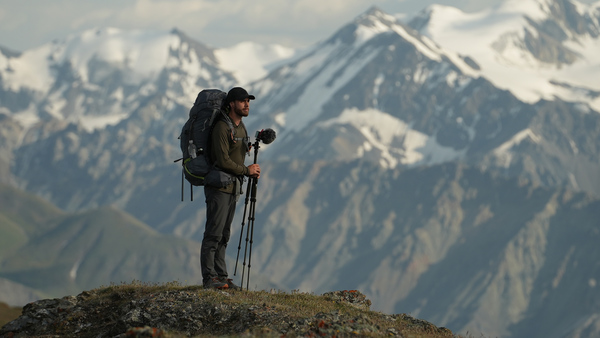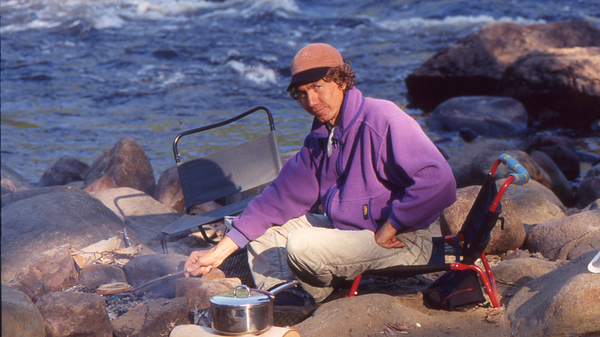Bolivia is a land of contrasts and discoveries, where every aspect of the journey can offer a unique and memorable experience. From dizzying altitudes to winding roads, diverse accommodations to rich cultural encounters, each trip element contributes to an incomparable adventure. This story from the Roy and D'amours family explores these facets through personal testimonies and observations to discover Bolivia better.

Altitude in Bolivia and its effects
Getting used to the high altitude in Bolivia can be quite challenging. The country's altitude ranges from 3000 to 5200 meters, and the body needs time to adapt to the lower oxygen levels at higher altitudes. This adjustment can lead to various unpleasant effects. Marie-Ève D'amours, who traveled to Bolivia with her partner Mathieu and their two children, experienced these effects firsthand. She describes it as feeling like low-intensity anxiety, with symptoms such as struggling to breathe and a faster heartbeat. These symptoms include headaches, dizziness, and sleep disturbances. In Sucre, located at 3000 meters, travelers experienced dizziness and pressure in the head, which was quickly relieved by rest and medications like Advil.
"Acclimatization to Bolivia's high altitude is an important factor to consider when visiting the country. Our trip involved traveling between 3000 and 5200 meters above sea level. Before we left, Mathieu, our main organizer, made sure to plan everything to ensure a smooth and gentle adaptation," recalls Marie-Ève. She was most worried about running out of air!
At altitudes beyond 4000 meters, every physical effort becomes a struggle due to the lack of oxygen, similar to the symptoms of mild anxiety. "Above 4000, we felt the need for more air, especially during physical activity," she recalls. Nights are particularly challenging, with the low oxygen levels causing frequent awakenings and a sensation of rapid heartbeats. The experience of high altitude affects not just the body but also the mind, with each night awakening serving as a reminder of the extreme environment the family was in.

Understanding Transportation in Bolivia
Getting around in Bolivia is an adventure in itself, with options ranging from domestic flights to affordable taxis, and even comfortable overnight buses. However, renting a car is highly discouraged due to the often winding and poorly maintained roads. "The famous Death Road tops the list of things that can scare us in Bolivia when we think about the transportation we have to do," Marie-Ève recalls, explaining that her partner had promised her that she would not be part of the family's itinerary.
"Our research indicated that renting a car in Bolivia is highly discouraged. The roads are winding and the infrastructure is weak, with routes frequently closed. Whether it's by foot, bus, plane, taxi, or even tuktuk, these modes of transportation are all preferable for getting from point A to point B in Bolivia," advises Marie-Ève.
Internal flights are a fast and affordable method to cross the country, offering stunning views of mountain landscapes. "From Santa Cruz to Sucre, we only spent about $60 per person," describes the mother of the family who was happy to avoid the roads at that time, because in Bolivia, the roads can be rough! Taxis, although inexpensive, require prior negotiation of the fare to avoid surprises. "Rapiditos", a type of taxi for medium distances, offer fast trips but can be quite bumpy. Night buses, widely used by locals and tourists, are comfortable and economical, with reclining seats and sometimes even included meals.

Accommodation Experiences in Bolivia
Accommodations in Bolivia vary greatly, ranging from simple hostels to luxury hotels. At Kulture Berlin hostel, the dynamic atmosphere and social interactions marked the beginning of the 4-night stay at $320 Canadian dollars. A great recommendation for all travelers in Bolivia, highly recommended by the Roy and D'amours family. This hostel offered them a panoramic view of Sucre and hearty breakfasts. "This very clean place exudes a "backpacker" atmosphere with friendly people of all styles. We were probably the first ones to go to bed, with the lullaby of the beer pong tournament happening just a little further down. We probably had the most beautiful room in the house with its 360-degree panoramic view. We loved the place, which is central and well located in the city of Sucre," she recalls.
On the other hand, the Compañia de Jesùs hostel in Potosi represented the other extreme, with rudimentary conditions and freezing temperatures. "It was 2 degrees in the room; we couldn't warm up at all!" says Marie-Ève. Showers were a challenge, with boiling water and a faulty cold water tap. Surviving in these conditions required sleeping close together to keep warm, with little success.
"Our range of accommodations in Bolivia has gone from a very basic survival room where the wind passed under the door to the luxury of a true 5-star with satin sheets," describes Marie-Ève D'amours, highlighting the diversity and contrasts of accommodation experiences in Bolivia, ranging from lively youth hostels to the rudimentary conditions of Potosi, to the luxury of hotels in La Paz and Santa Cruz.
Other accommodations, such as the Refugio de Turista, offered clean rooms and hot water, but the coldness persisted at night. The best accommodation experiences included the Ritz Appart Hotel in La Paz, where comfort and warmth were finally present, although short-lived due to some health issues with the son.

Memories of Bolivia: our cultural encounters
The encounters with Bolivians enrich the journey of the Roy and D'amours clan, as each interaction offers a glimpse into the local culture. From the moment they embark, the cultural change is palpable, with visible and linguistic differences: "We were the only ones in shorts. The only people who spoke French... In short, we were the only Caucasians!"
Interactions with local artisans, such as a "mama" making bracelets, reveal the warmth and kindness of Bolivians. Sweet and endearing, she charmed us. Street juice vendors bring a welcome touch of freshness under the scorching sun, while the omnipresent consumption of coca illustrates an important cultural tradition.
However, poverty is omnipresent, with children begging in the streets and restaurants: "Like when you're sitting at a restaurant and the child comes with their eyes at the level of your plate...you give a few dollars, but your heart turns upside down every time." These encounters, although poignant, show the social reality of Bolivia.
"The Bolivian people are very kind and welcoming. We never felt like our safety was at risk or had any fears that some people in our surroundings had warned us about before our departure.", Marie-Ève drops.

The Contrasts and Different Adaptations of Bolivia
The journey to Bolivia is a true cultural contrast, with each day bringing its own share of challenges and discoveries. In Potosi, the history of the mines and the palpable poverty create a heavy atmosphere, accentuated by loud protests: "It lacked joy of life, it was both impressive and unsettling." Despite the difficulties, the children show impressive resilience and adaptability.
Interactions with guides and local inhabitants, such as guide Gilbert and cook Paméla who prepared warm and comforting meals, create strong and lasting bonds. "Kind, caring, with a beautiful liveliness, serene and filled with happiness, our guide Gilbert loves to be away from tourists and takes us to unique viewpoints," she says. The exchange of gifts, such as bracelets (which didn't take up much space in the backpack!) or mini cans of maple syrup from François Lambert found at the pharmacy, symbolize cultural sharing and gratitude.
The linguistic challenge is constant, sometimes limiting the depth of exchanges, but enthusiasm and goodwill often bridge this gap. Shared experiences, whether it be meals or discussions on topics such as climate change, mutually enrich both cultures.
Conclusion: Living in Bolivia is adopting it!
Bolivia, with its high altitudes, winding roads, diverse accommodations, and cultural encounters, offers a rich adventure full of experiences and emotions. Every aspect of the journey, whether it's overcoming the challenges of altitude, navigating perilous paths, adapting to rudimentary living conditions, or bonding with local inhabitants, contributes to creating unforgettable memories. This total immersion in Bolivian culture, despite its difficulties, leaves a lasting impression on the hearts and minds of travelers.
10 things to know about Bolivia
1. Geographic diversity: Bolivia has very diverse landscapes, ranging from the Andean mountains to the Amazon, passing through the Salar de Uyuni, the largest salt flat in the world.
2. Capital: Bolivia has two capitals. Sucre is the constitutional and historical capital, while La Paz is the seat of government and the administrative capital.
3. Altitude: La Paz is the highest capital in the world, located at approximately 3,650 meters (11,975 feet) above sea level.
4. Indigenous population: Bolivia has a strong indigenous population, with around 62% of its inhabitants identifying as belonging to indigenous groups, such as the Aymara and Quechua.
5. Languages: Bolivia recognizes 37 official languages, including Spanish and many indigenous languages such as Aymara and Quechua.
6. Economy: The country is rich in natural resources, including lithium, used in batteries, which is mainly found in the Salar de Uyuni.
7. Culture: Bolivia is famous for its colorful and vibrant festivals, such as the Oruro Carnival, inscribed on the UNESCO Intangible Cultural Heritage List.
8. Biodiversity: Bolivia is one of the most biodiverse countries in the world, with a rich flora and fauna, especially in the Amazon regions.
9. The Death Road: The "Death Road", officially known as the Yungas Road, is often cited as one of the most dangerous roads in the world.
10. Gastronomy: Bolivian cuisine is varied and regional, with popular dishes such as salteña (a type of pastry), pique macho (a spicy meat dish), and api (a hot drink made from purple corn).
Blog
See all blog postsGet 10% off your first order
A confirmation email containing your promotional code will be sent to you. If you cannot find it in your inbox, please check your spam folder.
By subscribing, you accept that we will send you emails concerning promotions, events, products and other exclusive advantages that are only available to our subscribers.





